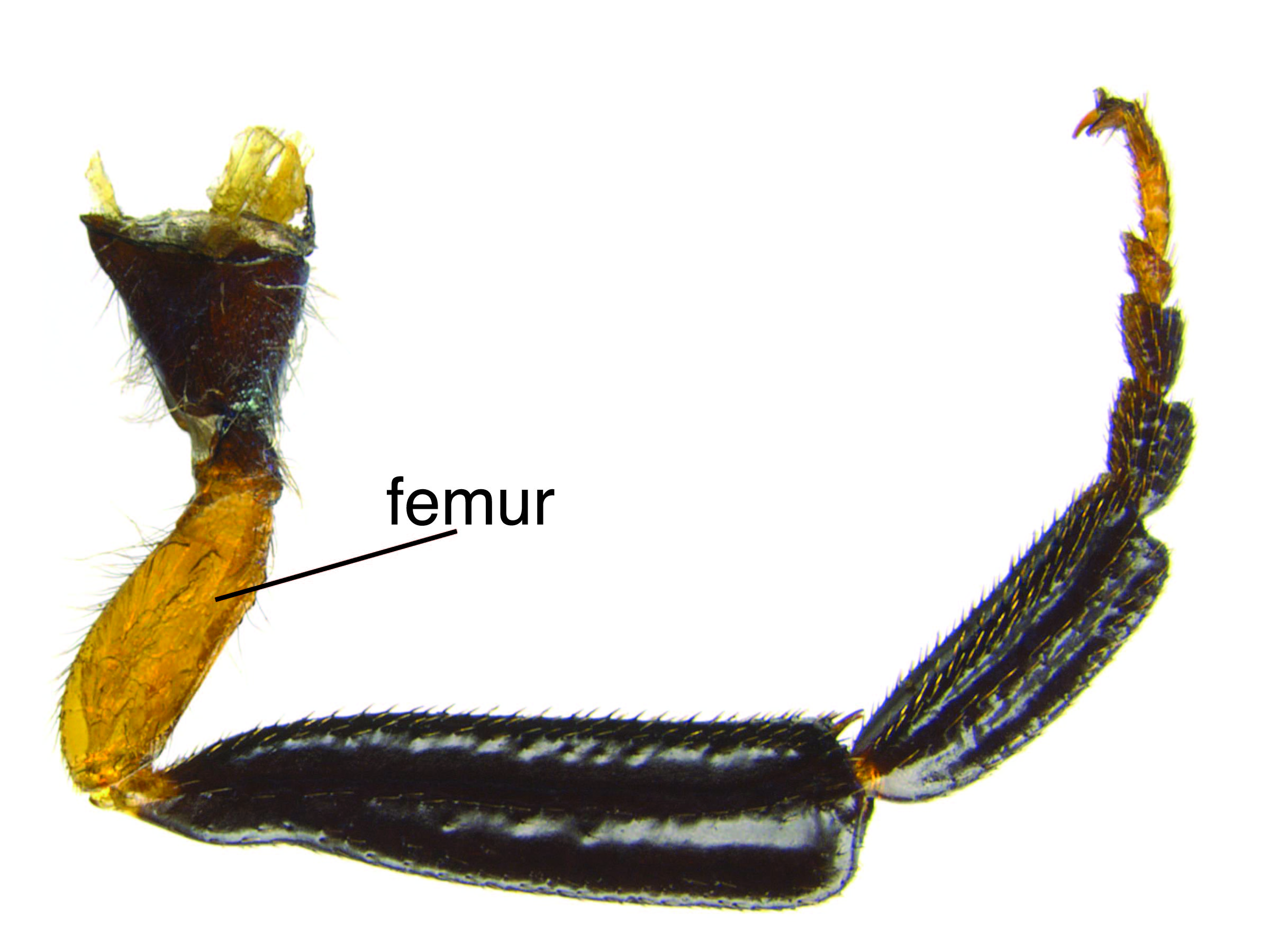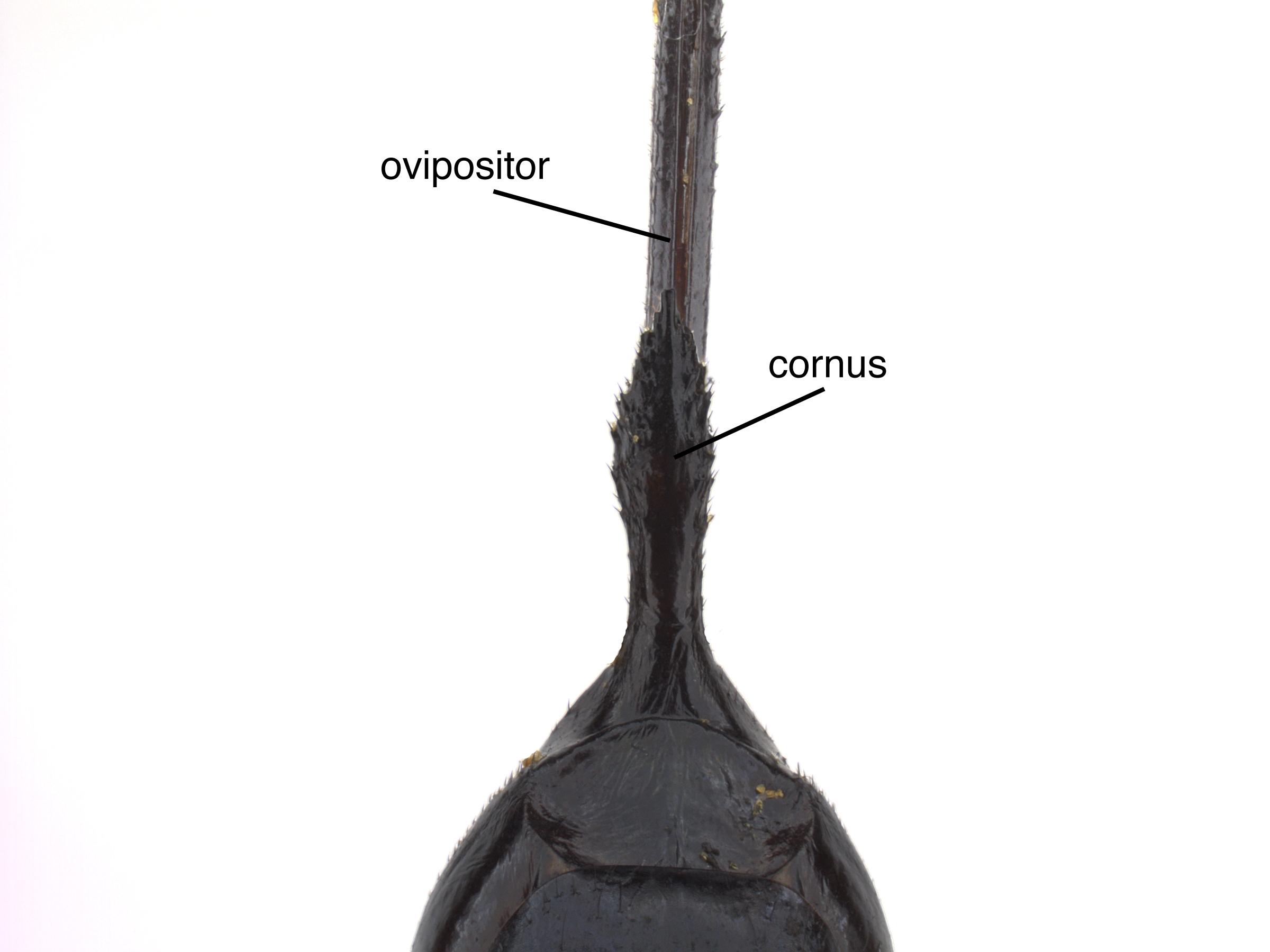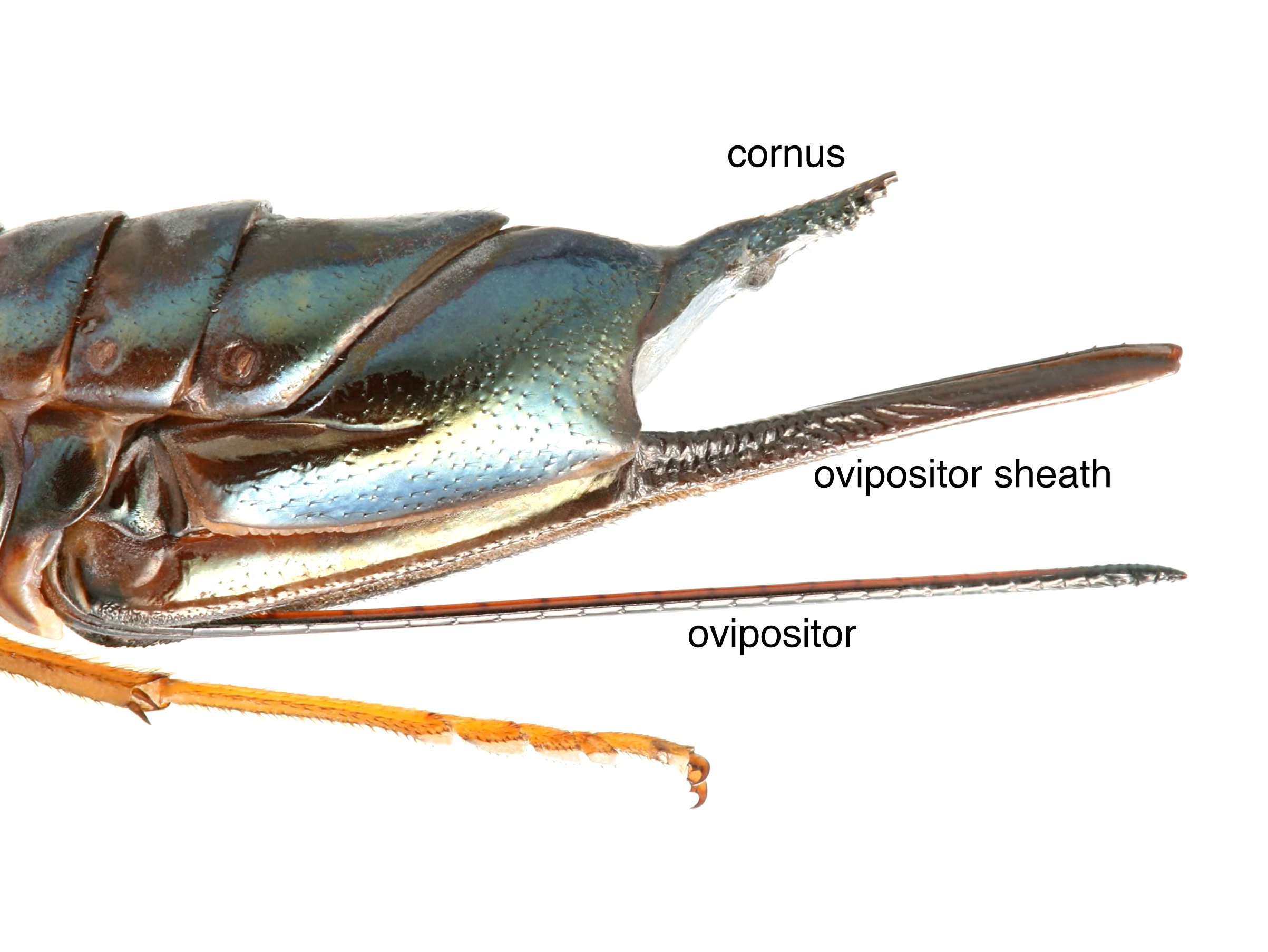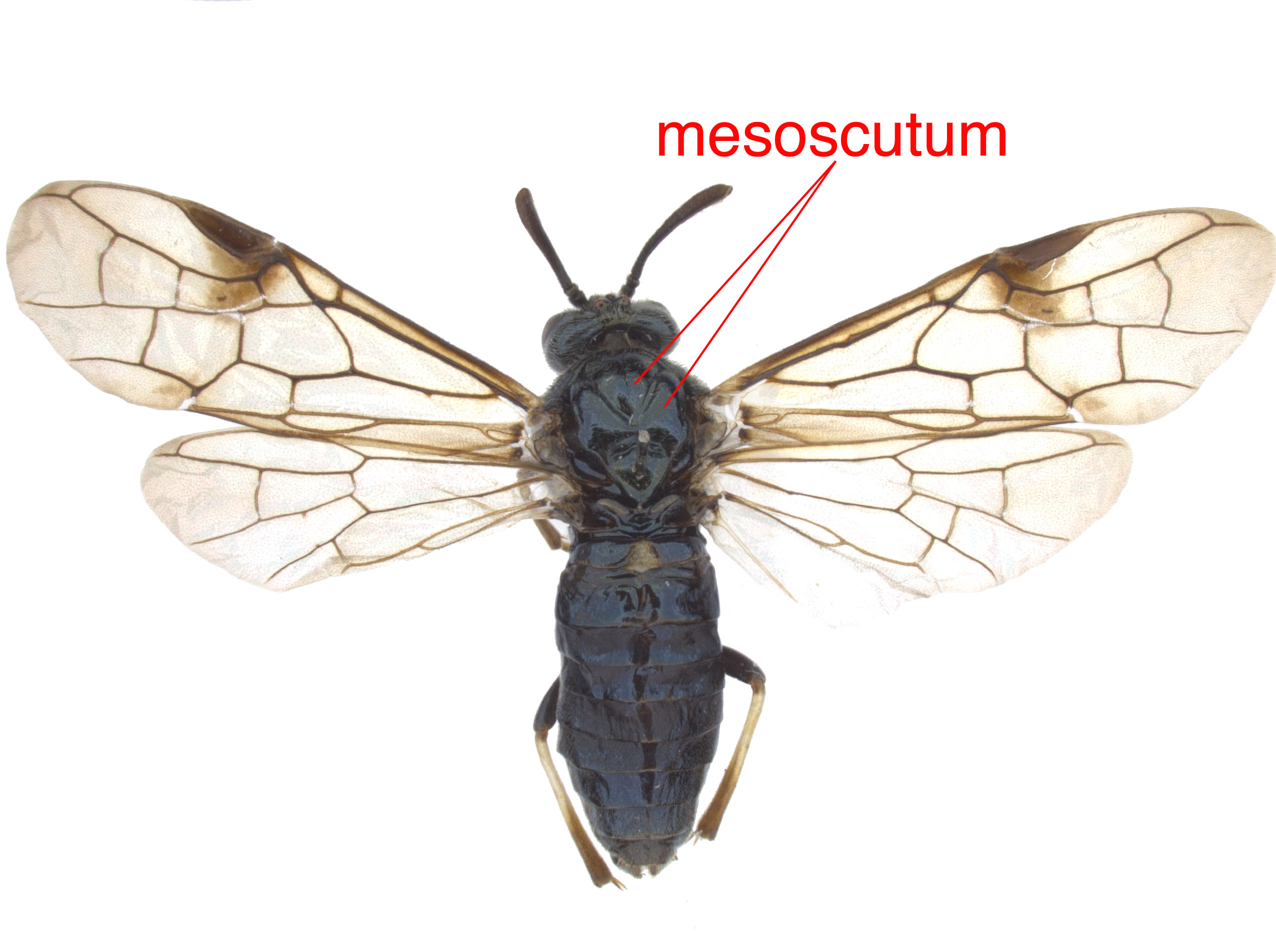Family: Siricidae
Subfamily: Siricinae
Genus: Sirex Linnaeus, 1760
Species: Sirex mongolorum (Semenov & Gussakovskij, 1935)
Common names: none
Sirex mongolorum is a rare, completely dark species that is known only from Mongolia and eastern Russia (Smith 1978Smith 1978:
Smith DR. 1978. Suborder Symphyta (Xyelidae, Parachexyelidae, Parapamphiliidae, Xyelydidae, Karatavitidae, Gigasiricidae, Sepulcidae, Pseudosiricidae, Anaxyelidae, Siricidae, Xiphydriidae, Paroryssidae, Xyelotomidae, Blasticotomidae, Pergidae). Hymenopterorum Catalogus 14: 1-193.).
See Sirex for genus-level diagnostic characteristics.
The following characters are taken from the short, original description written in Latin. It was difficult to translate, and the translating authors and subsequent researchers have been unable to confirm their accuracy.
Females:
 dark blue (Semenov and Gussakovskij 1935Semenov and Gussakovskij 1935:
dark blue (Semenov and Gussakovskij 1935Semenov and Gussakovskij 1935: yellowish-brown; tibiaetibia:
yellowish-brown; tibiaetibia: slightly darkened at the basebase:
slightly darkened at the basebase: hyaline and slightly darkened apically (Semenov and Gussakovskij 1935Semenov and Gussakovskij 1935:
hyaline and slightly darkened apically (Semenov and Gussakovskij 1935Semenov and Gussakovskij 1935: short; ovipositorovipositor:
short; ovipositorovipositor: not much longer, also short (Semenov and Gussakovskij 1935Semenov and Gussakovskij 1935:
not much longer, also short (Semenov and Gussakovskij 1935Semenov and Gussakovskij 1935: densely punctured (Semenov and Gussakovskij 1935Semenov and Gussakovskij 1935:
densely punctured (Semenov and Gussakovskij 1935Semenov and Gussakovskij 1935:Male S. mongolorum is unknown.
The female Sirex mongolorum can be distinguished from S. imperialis by the mostly light-colored legs (Benson 1943Benson 1943:
Benson RB. 1943. Studies in Siricidae, especially of Europe and southern Asia (Hymenoptera, Smphyta). Bulletin of Entomological Research 34 (1): 27-51. https://doi.org/10.1017/S0007485300023464). The third antennal segment is relatively longer in S. mongolorum than in S. ermak and S. noctilio (Semenov and Gussakovskij 1935Semenov and Gussakovskij 1935:
Semenov A and Gussakovskij VV. 1935. Siricides nouveaux ou peu connus de la fauna paleacute;arctique (Hymenoptera). Annales de la Socieacute;teacute; Entomologique de France 104: 117-126.).
none recorded
Sirex species feed on trees of Pinaceae and Cupressaceae. Sirex mongolorum is known from Picea spp. (spruce), Larix sibirica (Siberian larch), Larix (larch), Pinus pinea (stone pine), and Pinus spp. (pine) (Smith 1978Smith 1978:
Smith DR. 1978. Suborder Symphyta (Xyelidae, Parachexyelidae, Parapamphiliidae, Xyelydidae, Karatavitidae, Gigasiricidae, Sepulcidae, Pseudosiricidae, Anaxyelidae, Siricidae, Xiphydriidae, Paroryssidae, Xyelotomidae, Blasticotomidae, Pergidae). Hymenopterorum Catalogus 14: 1-193.).
Female Sirex harbor symbiotic basidiomycete fungus in abdominal glands called mycangia. During oviposition, the site is inoculated with the fungus (Amylostereum spp.), which begins to decompose the surrounding wood. LarvaeLarva:
the immature stage of holometabolous insects
 feed on the fungus, and in the process bore galleries through the wood (Schiff et al. 2012Schiff et al. 2012:
feed on the fungus, and in the process bore galleries through the wood (Schiff et al. 2012Schiff et al. 2012:
Schiff NM, Goulet H, Smith DR, Boudreault C, Wilson AD, and Scheffler BE. 2012. Siricidae (Hymenoptera: Symphyta: Siricoidea) of the Western Hemisphere. Canadian Journal of Arthropod Identification 21: 1-305.).
Larvae are creamy white and grub-like in appearance with a dark head capsule. As with adults, larvaelarva:
the immature stage of holometabolous insects
 possess a short dorsaldorsal:
possess a short dorsaldorsal:
of or on the top surface of the body or structure
horn on the posterior end of the body. The larvaelarva:
the immature stage of holometabolous insects
 bore galleries into wood, feeding until pupation and subsequent emergence. Throughout this process, the larvaelarva:
bore galleries into wood, feeding until pupation and subsequent emergence. Throughout this process, the larvaelarva:
the immature stage of holometabolous insects
 use their horn to pack the tunnel behind them with sawdust. Emergence holes are perfectly circular. The fungal symbiont is carried in specialized organs in female larvaelarva:
use their horn to pack the tunnel behind them with sawdust. Emergence holes are perfectly circular. The fungal symbiont is carried in specialized organs in female larvaelarva:
the immature stage of holometabolous insects
 that develop into the mycangia after metamorphosis (Schiff et al. 2012Schiff et al. 2012:
that develop into the mycangia after metamorphosis (Schiff et al. 2012Schiff et al. 2012:
Schiff NM, Goulet H, Smith DR, Boudreault C, Wilson AD, and Scheffler BE. 2012. Siricidae (Hymenoptera: Symphyta: Siricoidea) of the Western Hemisphere. Canadian Journal of Arthropod Identification 21: 1-305.).
The specific biology of S. mongolorum is unknown.
World: Sirex mongolorum is recorded in the mountains of Kentii, Mongolia and the city of Chita in eastern Russia (Semenov and Gussakovskij 1935Semenov and Gussakovskij 1935:
Semenov A and Gussakovskij VV. 1935. Siricides nouveaux ou peu connus de la fauna paleacute;arctique (Hymenoptera). Annales de la Socieacute;teacute; Entomologique de France 104: 117-126., Smith 1978Smith 1978:
Smith DR. 1978. Suborder Symphyta (Xyelidae, Parachexyelidae, Parapamphiliidae, Xyelydidae, Karatavitidae, Gigasiricidae, Sepulcidae, Pseudosiricidae, Anaxyelidae, Siricidae, Xiphydriidae, Paroryssidae, Xyelotomidae, Blasticotomidae, Pergidae). Hymenopterorum Catalogus 14: 1-193.).
North America: not recorded
Map data from: GBIF.org (26 June 2019) GBIF Occurrence Download Sirex mongolorum
Details about data used for maps can be found here.